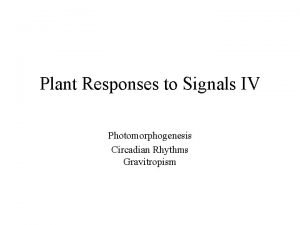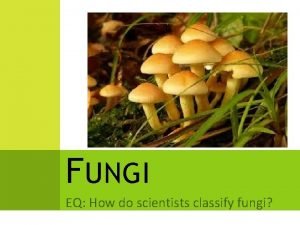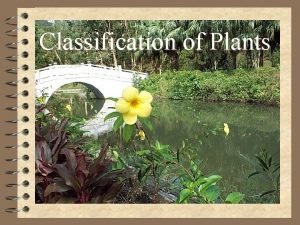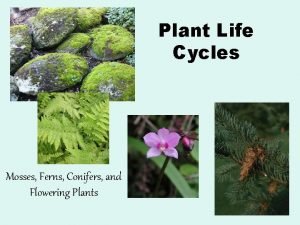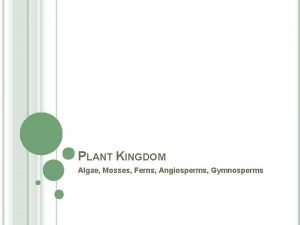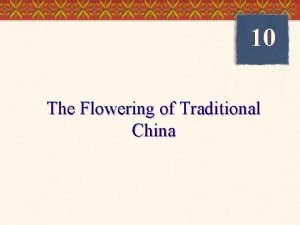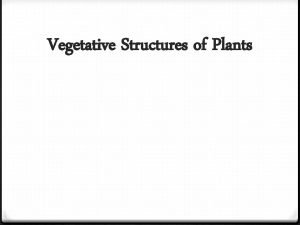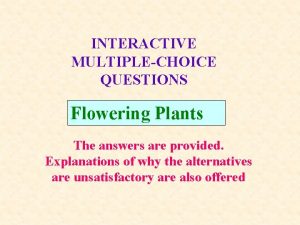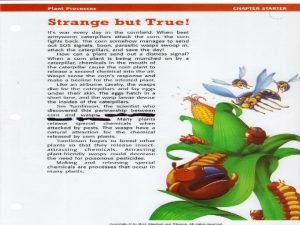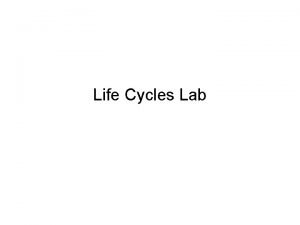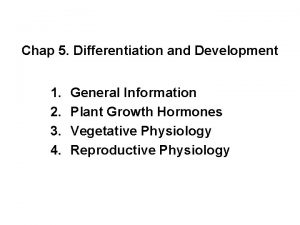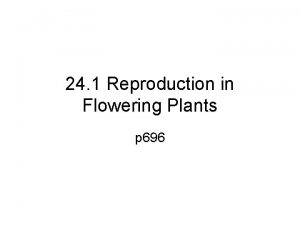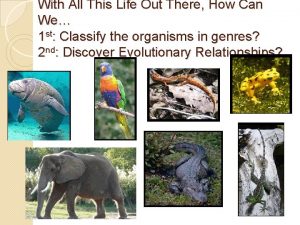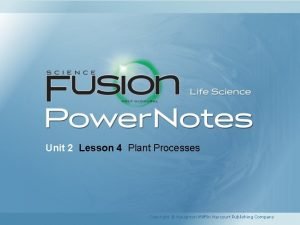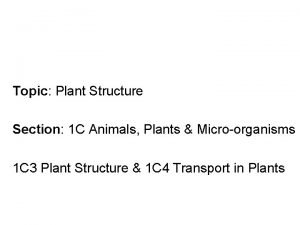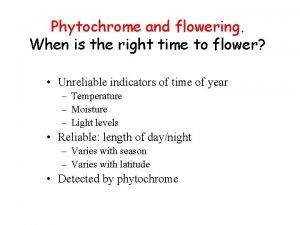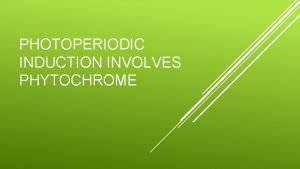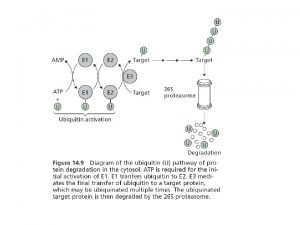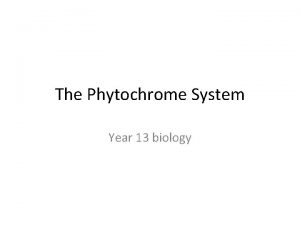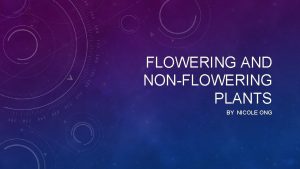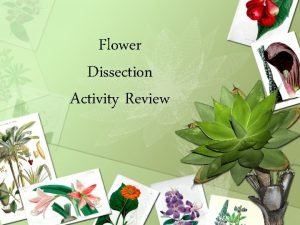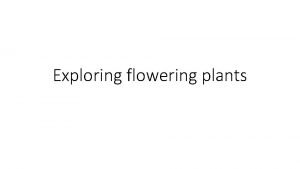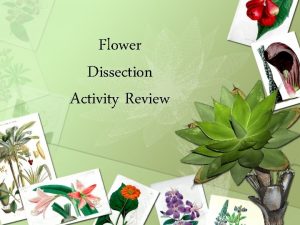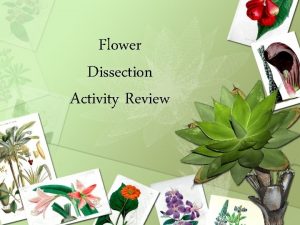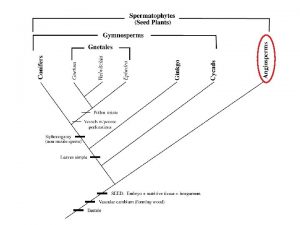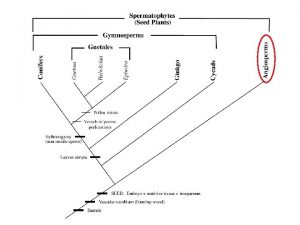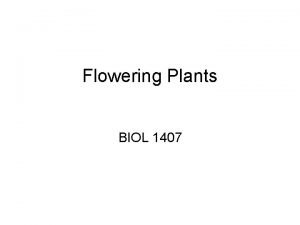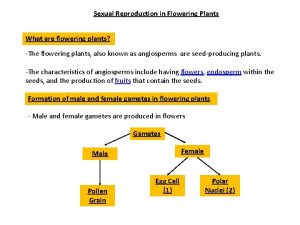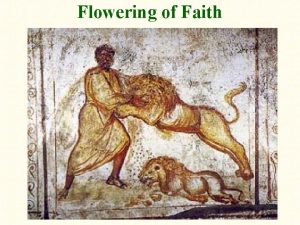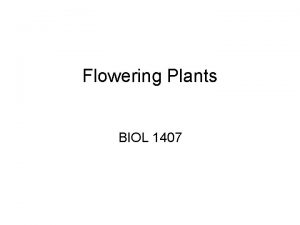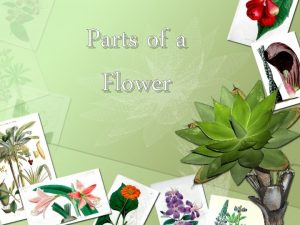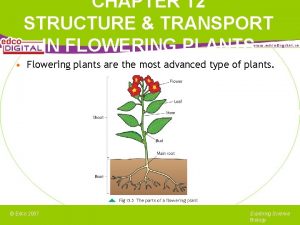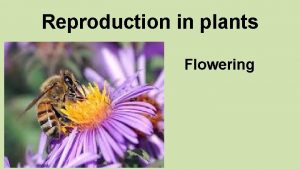Phytochrome and flowering When is the right time


























- Slides: 26

Phytochrome and flowering. When is the right time to flower? • Unreliable indicators of time of year – Temperature – Moisture – Light levels • Reliable: length of day/night – Varies with season – Varies with latitude • Detected by phytochrome

Sunlight Mostly red A little far red

In sunlight Prfr Pfr Pr Pfr Prfr Pfr Prfr Pfrr Pfr In sunlight most P gets converted to Pfr form.

Start of night Most P in Pfr form. Prfr Pfr Pr Pfr Prfr Pfr Prfr Pfrr Pfr

In the dark Pfr form changes gradually to Pr form. Prfr Pfr Pfr Prfr Prfr Prfr Pfrr Prfr

After a short night much Pfr still remains. Prfr Pfr Pfr Prfr Prfr Prfr Pfrr Prfr

Later in the night more Pfr changes to Pr. Prfr Pfr Pfr Prfr Prfr Pfr Pr Prfr Pfrr Prfr

After a long night all the Pfr is gone. Prfr Prfr Prfr Prfr Prfr

Next day Prfr Pfr Pr Pfr Prfr Pfr Prfr Pfrr Pfr Most P gets converted to Pfr form again.

Long day plant = Short night plants • Needs short night to flower • Needs Pfr still present at end of night • Pfr promotes flowering for LDPs

Short day plant = Long night plant • Needs long night to flower • Needs Pfr gone at end of night • Pfr inhibits flowering for SDPs Can trick a SDP into not flowering with a brief flash of red light during the long night, this resets much of its phytochrome to Pfr form.

LDP SDP Long day: Pfr remains at end of short night. Pfr promotes flowering for LDPs. Pfr inhibits flowering for SDPs. Short day: Pfr gone at end of long night. Lack of Pfr promotes flowering for LDPs. Lack of Pfr inhibits flowering for SDPs.

Blue light responses, chapter 18 1. Phototropism 2. Stomatal opening 3. Chlorophyll and carotenoid synthesis 4. Inhibition of hypocotyl elongation 5. Altered gene expression

Phototropism - directional growth toward light. Most evident in dark-grown seedlings.

Characteristic blue-light action spectrum Fig. 18. 1 “”three finger” pattern

Figure 18. 2

Wild type How does bending toward light happen? Mechanically, what’s going on? 1. Collapse of cells on near side Mutant 2. Increased growth on far side, no change on near side. 3. Reduced growth on near side, no change on far side.

Fig. 18. 6 Blue light depolarizes the plasmamembrane before reducing growth rate Blue light response causes differential growth by slowing cell expansion on near side. Blue light response is very rapid.

Blue light and stomatal opening


The blue light effect is not due to increased photosynthesis

Fig. 18. 11. Action spectrum for blue light stimulated stomatal opening in red light background.

Blue light stimulates guard cell H+ pumps.

Blue light stimulates a proton pump on guard cell plasmamembrane

Blue light regulates osmotic relations of guard cells: 1. H+, K+, Cl- fluxes at plasmamembrane 2. Malate synthesis increases 3. Sucrose synthesis increases 4. K+, Cl-, malate, and sucrose accumulate in vacuole

 Right product right place right time right price
Right product right place right time right price Family time
Family time Phytochrome function
Phytochrome function Examples of non flowering plants
Examples of non flowering plants What is classification of plant
What is classification of plant Characteristic
Characteristic The right man on the right place at the right time
The right man on the right place at the right time Elapsed time
Elapsed time Life cycle of a gymnosperm
Life cycle of a gymnosperm Six main parts of a plant
Six main parts of a plant Mosses ferns conifers and flowering plants
Mosses ferns conifers and flowering plants Go left left right right
Go left left right right You put your right hand in
You put your right hand in Left left right right go go go
Left left right right go go go The flowering of romanticism summary
The flowering of romanticism summary The flowering of traditional china
The flowering of traditional china Parts of a root
Parts of a root Multiple choice questions on flowering plants
Multiple choice questions on flowering plants Flower structure
Flower structure øa section through a leaf
øa section through a leaf How plants obtain nitrogen
How plants obtain nitrogen What process occurs
What process occurs Ethylene pineapple flowering
Ethylene pineapple flowering Flower female parts
Flower female parts Cladogram of five indoor plants
Cladogram of five indoor plants Unit 2 lesson 12 flowering plants
Unit 2 lesson 12 flowering plants Typical plant
Typical plant


